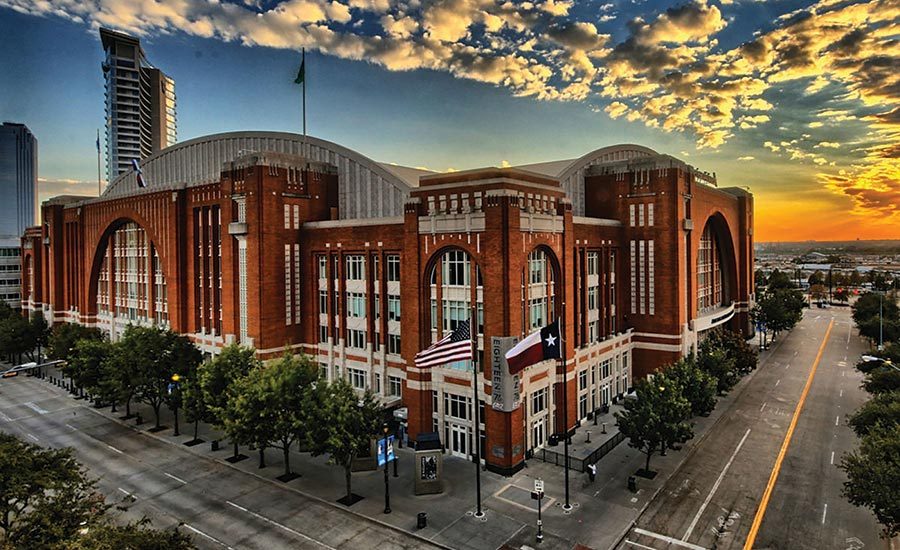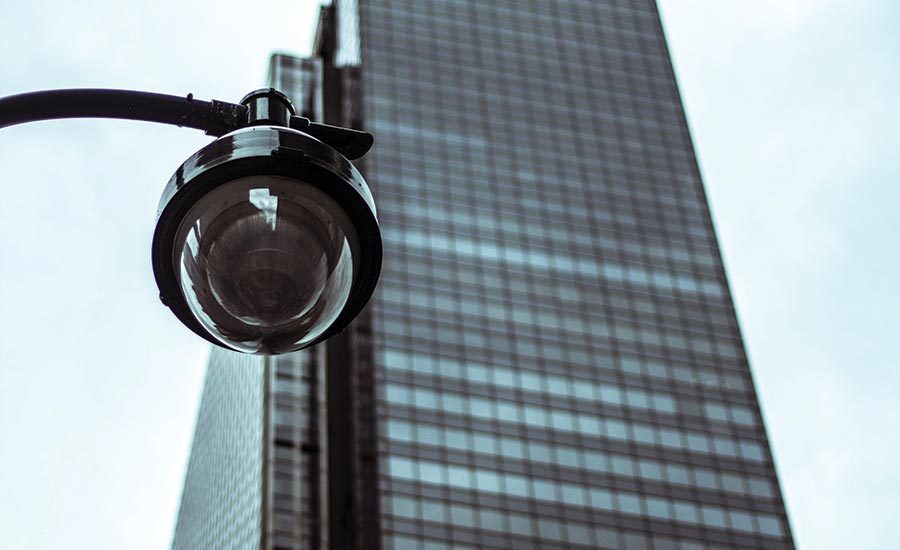First, a bit of rightsizing. High definition (HD), HDTV and megapixel cameras do not always mean higher quality images – big does not automatically mean better. Sometimes cramming more pixels on a sensor chip degrades the quality. As the pixels get smaller, they are less sensitive and worse in low light, and can produce grainy, “noisy” images.
Still, an HD or megapixel camera can add business value, no doubt, to business and operation needs beyond security and life safety. Even more, the cameras can replace a number of legacy cameras at measureable product and installation cost savings. In many instances, megapixel cameras allow security staff to digitally zoom in on specific details of images.
A megapixel number makes it easier to compare two different cameras. But the more megapixels a camera has, the more it costs.
No doubt, it’s all about the “dots.” Essentially, a pixel is one dot of information in a digital image, which can be made up of millions of tiny dots. A 10-megapixel image, for instance, contains approximately 10 million pixels, while an 18-megapixel image contains 18 million pixels. A full high-definition image is 1,920 pixels by 1,080 pixels. That amounts to 2.07 million pixels or two megapixels. Adding more pixels means capturing more information, but sometimes at lower quality, especially when the data is being processed to be shown on an HD screen.
More Megapixels, Less Cameras
Increasingly, megapixel cameras can provide additional business benefits. For example, a 29-megapixel camera can provide the coverage area of more than 95 traditional VGA cameras, according to marketing claims.
The most common megapixel resolutions are one megapixel and two megapixels. One major difference is that the 1080p cameras have two times the resolution – pixels – as compared to 720p. A 1080p has 1920 by 1080 resolution or 2.07 megapixels. A 720p camera resolution has a resolution of 1280 by 720 or 1 megapixel. There are two types of 1080, however. 1080i video is “interlaced.” It contributes to a sense of motion and reduces perceived flicker. 1080p video is called “progressive scan.” The latter makes images look sharper and more defined.
With common 1- and 2-megapixel cameras, a full frame rate of 30 frames per second (fps) is standard, though for higher megapixel camera counts (5 and higher), end users must plan for lower fps and an increase in network use because of the high bandwidth that is required to transmit information to the camera.
Whatever the technical mumbo jumbo, it comes down to how the technology is applied, whether as value to security or as a way to add business value to the bottom line beyond security.
Megapixel Success
The Horwitz-Wasserman Holocaust Memorial Plaza, located in the heart of Philadelphia, Penn. is a living testament and tribute to the victims of the Holocaust. The goal of the Memorial Plaza is to educate visitors and compel them to work towards a world of tolerance and enlightenment wherein nothing like this could ever occur again.
The Memorial Plaza features artifacts and educational features, including pieces of the railroad tracks victims rode on, forcibly, to their deaths, as well as six pillars honoring the memory of the six million Jews murdered by Nazi Germany and its collaborators.
Eszter Kutas, Executive Director of the Philadelphia Holocaust Remembrance Foundation, ensures the safety and security of the site.
Because of the large size of the Memorial Plaza and park area, a standard definition camera wouldn’t suffice, but Hanwha’s high resolution 4K Network IR Bullet Camera did. The cameras allow the security team to zoom in and see, in close detail, the face of someone passing by the camera who may be a suspect. The camera from Hanwha’s Wisenet P series performance IP camera line is a 4K camera that is key in capturing people and events in full detail.
For the actual Memorial Plaza site at large, a 5-megapixel resolution camera works well in both day and night conditions, and features analytics for loitering, directional detection, fog detection, audio and tampering detection, as well as digital auto-tracking and sound classification. The cameras are tied into a video management system(VMS), which allows authorized administrators from the Philadelphia Holocaust Remembrance Foundation and the local Police Department to log in and view the video footage produced by the cameras at any time.
Jennifer Wright, Project Manager at the Philadelphia Holocaust Remembrance Foundation, reports, “We’re happy with the quality of the Hanwha cameras. The interface is user friendly, as is the ability to review and isolate footage of incidents occurring at the Memorial Plaza.”
The Horwitz-Wasserman Holocaust Memorial Plaza was not spared from anti-Semitism. It was vandalized by a man who etched the initials “REM” and two SS bolts – a known Nazi symbol – into the memorial’s pillars. With the help of the surveillance cameras, the perpetrator was quickly apprehended.
“The cameras proved to be fantastic in resolving this incident,” Wright says. “I looked at the footage and was able to get a few different angles of the person responsible for the crime. The footage was of good quality, and I could clearly see the perpetrator. We sent it to Philadelphia Police Department, and they put out a media advisory; we also shared images of the person responsible for the defacement of the Six Pillars on Facebook. Footage of the incident was shared thousands of times on social media. Public sharing of these images eventually led to a positive identification of a suspect.”
Another megapixel success story comes from Jersey City, NJ, which recently added 58 cameras to its security system for a total of 214 cameras citywide.
The new high-definition, 5-megapixel cameras serve as a deterrent against crime and allow for images clear enough to identify and track suspects, becoming admissible evidence in court.
“It is without question that surveillance system has made our crime-fighting initiatives that much more successful,” says Jersey City Mayor Steven Fulop. “Working with the community, over the last three years we have completely revamped the previously outdated and unusable system with high-quality technology in strategic locations to advance our ultimate goal of maximizing public safety efforts citywide.”
The new cameras are equipped with a significantly higher resolution compared to the “archaic” 1-megapixel system the administration inherited, which was composed of less than 50 working cameras, according to a press release from the city.
The locations for the new HD cameras are based on community feedback and crime data that identify areas with historically high crime rates.
“Upgrading our surveillance system has already proven useful in numerous cases,” says Public Safety Director James Shea. “One example occurred just last month when our officers were able to pursue a fleeing suspect. They used the cameras to follow his car, then trail the actor on foot. Despite multiple attempts to elude the police – changing his clothing, and even joining an active basketball game – police officers were still able to track and apprehend the suspect using the cameras. Without this advanced system, this criminal and many others may still be on the loose.”
Megapixel Means Recovering Stolen Property
American Airlines Center in Dallas, Texas is one of only a handful of dual-sports arenas in the country. Home to the Dallas Mavericks National Basketball Association team and the Dallas Stars National Hockey League team, the venue also hosts 40 to 50 major concerts annually.
Much like a small city, the stadium also sports dozens of retail stores, concession stands, restaurants and customizable meeting rooms. Public safety and loss prevention are just some of the daily challenges facing the security team in this bustling, high-traffic building. So when the stadium’s aging analog surveillance cameras began to fail, the director of operations decided to replace the entire surveillance system with a more advanced, high-definition, network-based video camera system.
With the assistance of a surveillance systems integrator, the American Airlines Center deployed a mixed array of 228 Axis network cameras throughout the building – from the seating bowl, multiple concourses and lobby areas to the retail space and rooftop.
The HD-quality cameras – which range in capabilities from pan/tilt/zoom to wide dynamic range, wide angle field of view and infrared – are linked through a VMS Security staff views live and recorded video 24/7 on a bank of six 55-inch HD 1080p TV monitors 24/7 in the on-premises security center. Video is stored on four 20-terabyte servers and archived up to 30 days.
When compared to their old analog system, the clarity of the HD-quality cameras enables the building security officers to quickly spot incidents they would have never caught before and intervene before situations escalate. The broad coverage also helps the team expedite investigations and speedily resolve issues like stolen property and customer service disputes.
Finding the right camera system for such a diverse environment presented a challenge. “Once we decided to replace our failing analog system, we invited most of the major camera manufacturers to showcase their products in the building, so we could see how they perform,” says Mose Boyer, Director of Operations for the American Airlines Center. “A number of competitors excelled in one specific area, but Axis was top of the line all across the board.”
Boyer walked every square inch of the building multiple times deciding where to place cameras and which camera models would best suit the lighting challenges of the location and provide the best fields of view. For instance, AXIS Dome Network Cameras on all four corners of the rooftop give security a great view of the parking lots.
AXIS cameras with built-in IR illumination keep watch over the suite levels, which are only lit by emergency lights when not in use.
The 134-degree wide angle view of the network cameras allows Boyer to cover larger areas with fewer cameras, such as the rotunda on the concourse. In the atrium areas where bright ambient light could easily wash out the image, Boyer chose an AXIS Network Camera with advanced wide dynamic range to ensure that no part of the image is too dark or too bright.
“We installed the wide dynamic range camera right behind our front reception desk and directed it towards the door,” says Boyer. “The white balance is amazing. Even the area of the frame where the door opens is crystal clear so you can see the face of the person entering the building.”
The breadth of strategically placed cameras has been instrumental in curtailing losses in the complex. When an employee’s smartphone went missing from a charging station at the front of one of the club restaurants, the security team was able to review video from the vicinity and trace the movements of a suspect. From the clarity of the image, they were able to determine that the individual was an outside contractor.
The security team sent a video clip of the individual to the employing company who contacted the person demanding the phone’s return. It was brought back the next day and returned to its rightful owner.
In another instance, there was an altercation in the seats during a game. One of the parties insisted that another guest be ejected from the premises. This patron also complained that guest services failed to handle the situation correctly and demanded that the American Airlines Center employee be fired. When security reviewed the video of the incident, it told an entirely different story. When the patron was confronted with the evidence, the complaint was rescinded and no one’s job was lost.
According to Boyer, the new system has been well worth the investment. “We went into this project thinking we would do a pretty good job covering what we wanted to cover,” says Boyer. “But with the help of the integration partner and Axis, we’ve knocked it out of the park. The system is really comprehensive. It does exactly what we want it to do. And we plan for it to serve us for many years to come.”






.png?height=200&t=1663350214&width=200)


